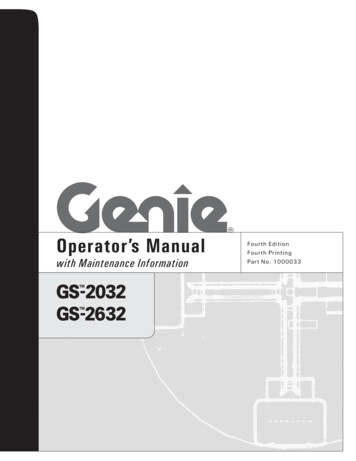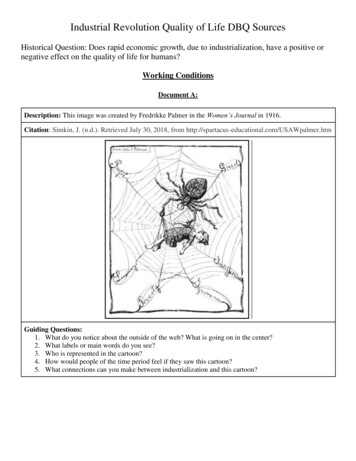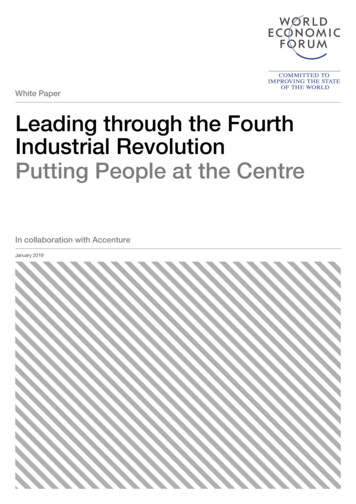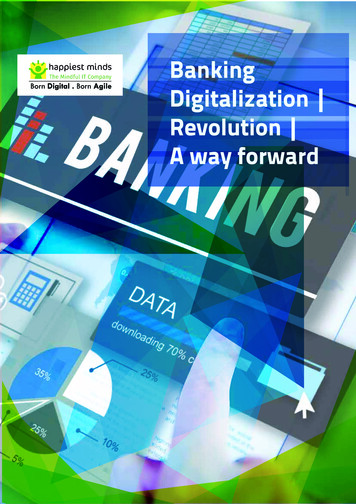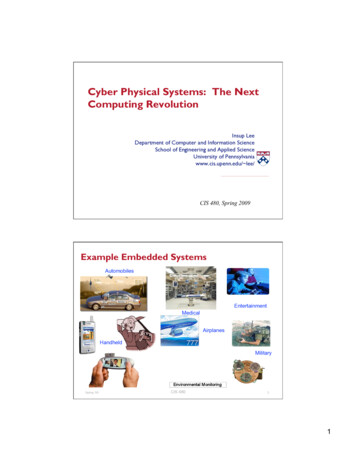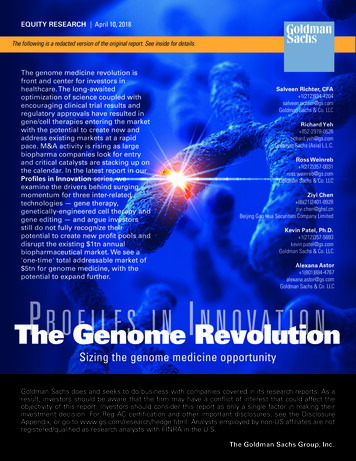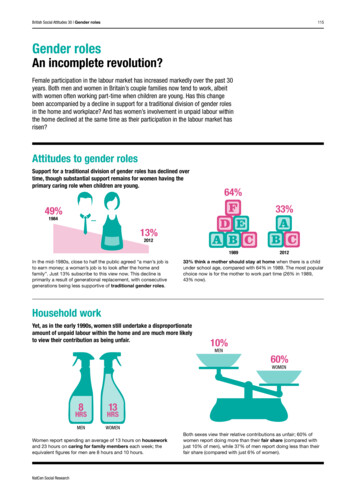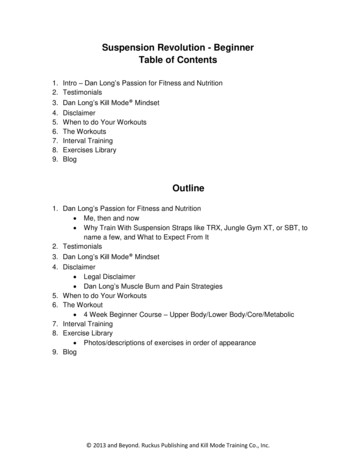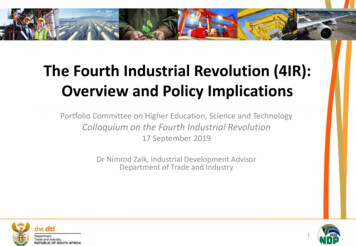
Transcription
The Fourth Industrial Revolution (4IR):Overview and Policy ImplicationsPortfolio Committee on Higher Education, Science and TechnologyColloquium on the Fourth Industrial Revolution17 September 2019Dr Nimrod Zalk, Industrial Development AdvisorDepartment of Trade and Industry1
Structural transformation: industrialisation,technology and skills Structural transformation and catch-up: shift ofpeople from low to higher-value adding activities industrialisation. Industrialisation has become more challenging overthe last few decades but no country has caught up by “leapfrogging” theindustrialisation stage:– Main site of technological and skills acquisition; and– Linkages to and multipliers with to rest of economy. No case of successful industrialisation withoutindustrial and related policies: technology and skillsacquisition.2
Manufacturing drives growth Compound annual Manufacturing growth vs GDP per capita growth, 1994-2016Source: World Bank Development Indicators3
and formal employment creationCompound annual Manufacturing growth vs formal employment growth, 1994-2016Source: SA Reserve Bank Quarterly Bulletin4
The 4IR and increasing digitalisation Data: the new “primary resource”. Increasing digitalisation of production and distribution. Securing policy space and formulating appropriate policyresponses.5
The 4IR and increasing digitalisation Digitalisation and integration of supply chains. Digitalisation ofproduction and supply chains is the minimum requirement forparticipating in the new digital economy:co-ordinationefficiencies, condition monitoring and process optimisation. Design, rapid prototyping and customisation. additivemanufacturing and material science is significantly reducing thetime to develop prototypes and produce tooling. Advanced manufacturing and automation. Integrated,collaborative manufacturing systems that respond in real time tomeet changing demands in the factory and the supply network E-commerce, online search and social media platforms. Onlineplatforms can open-up routes to consumers for small, mediumenterprises. But “super” platforms dominate with accompanyingpower to determine rules for participation.6
The 4IR and digitalisation: policy principles Digital industrialisation: involves both incrementalchanges and disruptive technological innovations. Digital industrialisation must create conditions formore domestic value creation and distribution. Systemic changes call for systemic and integratedpolicy frameworks: trade, regulation, competition,taxation, industrial, technology, skills andinfrastructure policies.7
The 4IR and digitalisation: policy considerations Policy space and digital sovereignty:– Global, regional and bi-lateral negotiations;– Plurilateral process on e-commerce rules;– Need for global rules that are developmental andenable digital sovereignty; and– Developing countries need to preserve policy space torespond to current and future technological change.8
The 4IR and digitalisation: policy considerations Taxation:– Taxation of physical and digital goods and services;– Fiscal integrity; and– Measures to address base erosion and profit shifting(BEPS).9
The 4IR and digitalisation: policy considerations Competition and Regulation:– Global “super platforms” and “winner takes most”market outcomes; and– Emerging responses in various domains including EU,India, Indonesia, Rwanda.10
The 4IR and digitalisation: policy considerations Digital Infrastructure:– Ensure 5G network rollout is competitive and deliversaffordable data.– Potential improvements digitalisation can bring to“traditional” infrastructure and public services, e.g. Smart grid enablement of renewable energy at scale; E-government / public services; and Climate change mitigation, water efficiency and agriculturalmodernisation.11
The 4IR and digitalisation: policy considerations Digital Industrial Capabilities:– Firms increasingly need to acquire digital capabilities aspart of industrial upgrading.– Financing instruments for acquiring digital industrialcapabilities Expansion and adaptation of financing instruments;Acquisition of digital supply chain tools;Innovation and commercialisation; andR&D.12
The 4IR and digitalisation: policy considerations Digital Industrial Capabilities Skills Sets:– Software engineering, data science and related ICT skills;– ing (CAM), Enterprise Resource Planning (ERP),Materials Requirements Planning (MRP) and ManufacturingExecution Planning (MES);– Sector-specific digital skills in partnership with industryassociations and Sector Education and Training Authorities(SETAs);– Curriculum adaptation and financing for VocationalEducation and Training (VET) institutions; and– Big data analysis.13
The 4IR and digitalisation: policy considerations Digital Policy Skills Sets:–––––Regulation and competition;Trade negotiations;Industrial, technology, innovation and skills policy;Big data analysis for public policy; andE-government. Education:– Numeracy;– Maths and Science; and– Science, Technology, Engineering and Maths (STEM) skills.14
Colloquium on the Fourth Industrial Revolution 17 September 2019 . Structural transformation and catch-up: shift of people from low to higher-value adding activities industrialisation. Industrialisation has become more challenging over . manufacturing (CAM), Enterprise Resource Planning (ERP), Materials Requirements Planning (MRP .
